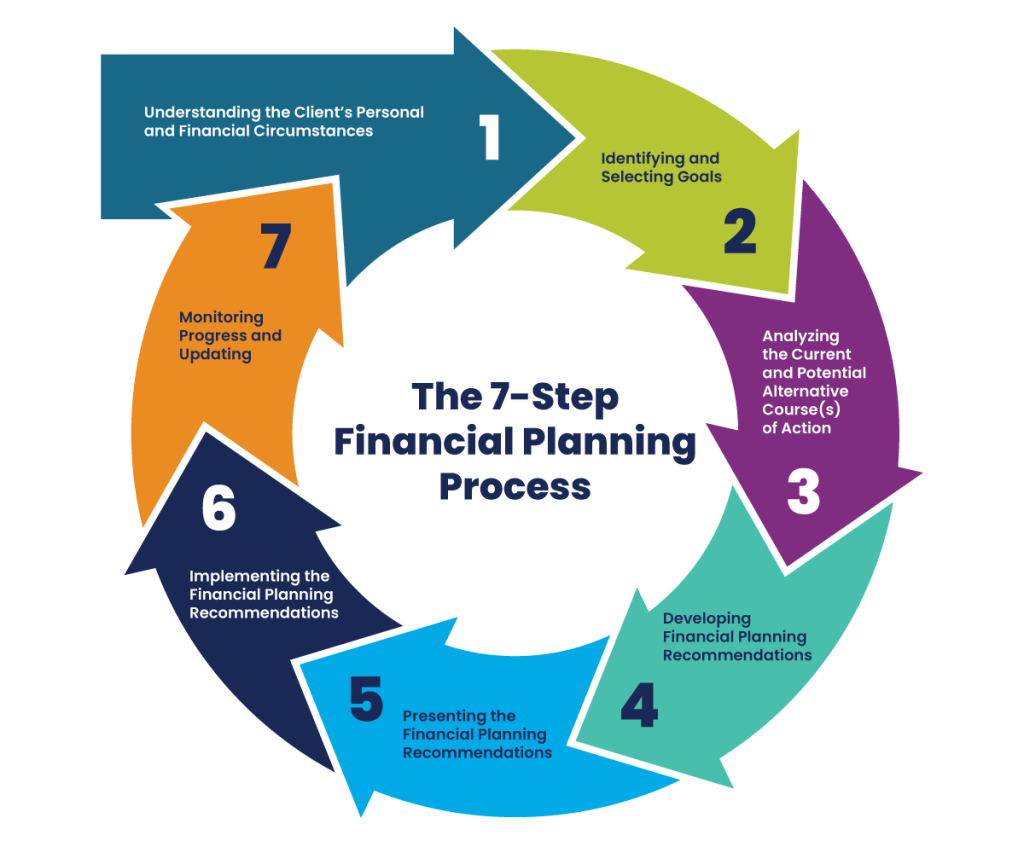Why Teaching Clients May Be Your Most Strategic Asset in 2026
Many financial professionals see the annual calendar change as a time to look for future opportunities. For forward-thinking financial planners… Read More

Insights and best practices for successful financial planning engagement
• Joe Buhrmann • November 21, 2022

When asked about your financial goals, do you have a ready answer? And if you do, how detailed is that answer? The things we hope to accomplish financially can be as broad as the approximate age at which we want to retire to as detailed as the type of legacy we hope to leave.
Why is goal setting important in the financial planning process? Clients want to work with someone who gets to know them beyond their financial holdings and understands their values, concerns, and passions.
Helping clients articulate and share this information can be challenging—but it’s one of the most important aspects of setting your clients up for success.
A client may come to you initially because they know they need to plan for the future. And that’s a good place to start the conversation—by asking what brought them in to see you. No matter what the reason, use follow-up questions to drill into their ultimate financial planning purpose.
By asking high-level questions, you can stimulate your clients’ thoughts to get them to talk about their dreams and ambitions. Ask open-ended questions and use active listening skills to ensure they are getting to the heart of what they want out of the financial planning experience.
This is also a good time to introduce exercises that can reveal critical insights into clients’ values, beliefs, and attitudes about money. There are numerous tools available to get to the heart of their views on money and the impacts it has had on their financial beliefs. Understanding the client’s relationship with money can provide guidance on why they have certain outcomes in mind, which will help the advisor ensure they are truly meeting their client’s needs.
These conversations are just the first step when getting to know a new client, but they should be revisited throughout the relationship. Life can change in an instant and those changes can have a big impact on what clients want to achieve with their financial plan.
Once the financial planner and client are comfortable that they have successfully established their financial planning desires, it’s time to drill down to create tangible goals. This is where the SMART method can be employed.
The SMART (Specific, Measurable, Adaptable, Realistic, and Time-bound) goal-setting method is often used in a professional development context to promote a clear understanding of what constitutes expected levels of performance. In the same way an employee can use this method to ensure they are achieving their development goals, financial professionals can use it with clients to establish financial planning goals.
SMART goals are versatile in the financial context because they can be used to set goals for anything from paying off debt to saving for retirement.
For example:
Eliminating Credit Card Debt: Client will pay off $5,000 in credit card debt in 10 months by putting $500/month (plus interest) toward it. They will achieve this by using the money they earn from their side hustle in consulting and by not using their card during this time.
Saving for Retirement: Starting with their next pay, the client will contribute 15% of their monthly income to their 401(k) plan and receive their employer’s matching contributions. This will help them prepare to retire at age 65 with an annual income of $85,000.
By incorporating this goal-setting exercise into the financial planning process, advisors will better understand their clients and what they value. Once established, this framework makes it easy to readjust the goals and plan depending on changes in the client’s circumstances, risk appetite, the performance of their investment portfolio, and/or their investment purposes.
The exploration of client emotions and their connection to financial behavior is so important to the financial planning process that the CFP Board has added the study of financial psychology to its exam requirements.
The practice of helping clients dig deep to find their purpose as part of the financial planning goal-setting process is to ensure they have an emotional connection to those goals. If clients don’t have an emotional connection to their goals, will they believe enough in the recommended financial strategy to achieve them? Or will they abandon the plan as soon as they hit a snag?
A loss of motivation happens all the time. It’s one of the biggest complaints I hear from financial planners who establish workable plans for their clients only to find the clients cannot seem to stay disciplined enough to complete the journey toward achieving their goals.
This can happen when the financial planner has placed a greater emphasis on numbers and results, forgetting about the client’s emotional connection to the goals. Here are some discussion prompts to use with clients to help them remember why they have set particular goals.
Ask them to articulate how it would feel to achieve their goal.
Have them visualize that moment when they make the final payment on that credit card or that moment when they purchase the vacation home they have been saving for. Is it a sense of relief or pride?
Ask them how it would feel to NOT achieve their goal.
Ask your client to think about the emotions they would feel in six months, or a year if they haven’t made the effort to contribute to a goal they have established. Would that be disappointment, resentment, frustration?
Ask your client why they care about achieving this goal.
What will achieving this goal allow the client to do that they can’t do now? Give them the helpful suggestion of writing out their answer to this question so they can come back to it if they’ve lost motivation or didn’t keep up with a goal they’ve set.
No client financial plan would be complete without incorporating the final step of the CFP Board’s seven-step financial planning process—monitoring progress and updating. The process of helping your clients determine their purpose—and therefore the purpose of their financial plan—plays a part in each step of the planning process.

But it’s the final monitoring and updating step that speaks to the cyclical nature of financial planning because as we know life is unpredictable and a client’s needs can change in an instant.
Financial planners have a responsibility to monitor client progress toward goals, keep information up to date, and revise the client’s goals, recommendations, and implementation decisions as necessary.
In the spirit of the goal-setting actions described, it gives the financial planner the opportunity to act as the client’s accountability partner and remain mindful of the importance of their emotional connection to their plan.
DISCLAIMER: The eMoney Advisor Blog is meant as an educational and informative resource for financial professionals and individuals alike. It is not meant to be, and should not be taken as financial, legal, tax or other professional advice. Those seeking professional advice may do so by consulting with a professional advisor. eMoney Advisor will not be liable for any actions you may take based on the content of this blog.
You may also be interested in...
Many financial professionals see the annual calendar change as a time to look for future opportunities. For forward-thinking financial planners… Read More
For the last 13 years of my career, I’ve spent a lot of my time working with and coaching financial… Read More
Financial planning in today’s world increasingly relies on technology and using digital tools to enhance the role of a financial… Read More
Download this eBook now and learn how AI is expected to impact the industry.
Download Nowa new source of expert insights for financial professionals.
Get StartedTips specific to the eMoney platform can be found in
the eMoney application, under Help, eMoney Advisor Blog.